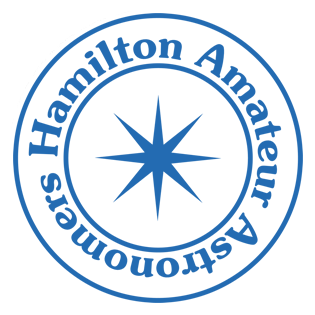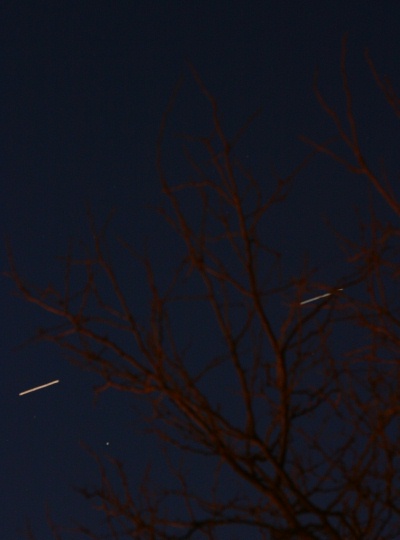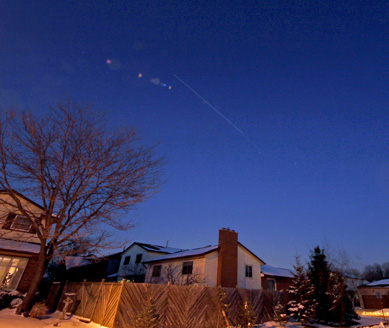Request for archival data: V1647 Ori and McNeil’s Nebula
February 15, 2011: Dr. Colin Aspin (U. Hawaii) has requested archival images and other observations of the FU Orionis variable V1647 Ori and the surrounding field over the previous 10 years in support of a study of this star. Aspin writes that he is hoping to obtain more data with which to create a multi-year light curve of this star to put present-day observations in context of its past behavior.
The AAVSO international database contains fewer than 50 observations of this star over the past ten years; however, V1647 Ori lies near the bright reflection nebula M78 (central coordinates: RA: 05 46 46.7, Dec +00 00 50), and is believed to be the illumination source of the recently erupted object McNeil’s Nebula, first discovered in 2003. Observers with deep-sky images of the M78 field and/or of McNeil’s Nebula may have images in which V1647 Ori/McNeil’s Nebula are visible. AAVSO observers with sufficient experience in image reduction are asked to photometer their images to obtain magnitudes of V1647 Ori and to submit these data to the AAVSO; Aspin also requests that you contact him for copies of your images as well. All observers are invited to contact Dr. Aspin directly (caspin@mac.com) with questions and for further information and assistance; he notes that any observers who provide useful data on V1647 Ori and/or McNeil’s Nebula will be acknowledged by name in the forthcoming publication to be submitted to the Astronomical Journal.
V1647 Ori is located at the following (J2000) coordinates:
RA: 05 46 13.14 , Dec: -00 06 04.8
Charts for the V1647 Ori field are available via VSP:
http://www.aavso.org/vsp
We note that due to the presence of nebulosity in this region, observers should consider plotting DSS charts rather than using the default plotting option.
Please submit all observations to the AAVSO using the name “V1647 Ori”.
This AAVSO Special Notice was prepared by M. Templeton.
—————————————————
SUBMIT OBSERVATIONS TO THE AAVSO
Information on submitting observations to the AAVSO may be found at:
http://www.aavso.org/webobs
SPECIAL NOTICE ARCHIVE AND SUBSCRIPTION INFORMATION
A Special Notice archive is available at the following URL:
http://www.aavso.org/special-notice-archive
Subscribing and Unsubscribing may be done at the following URL:
http://www.aavso.org/observation-notification
Page Editor: Matthew Templeton
Last Updated: February 15, 2011 – 4:23pm
Keywords:
* archival data
* deep-sky
* front page news
* Observing campaigns
* Special Notices
* young stellar object
* YSO


